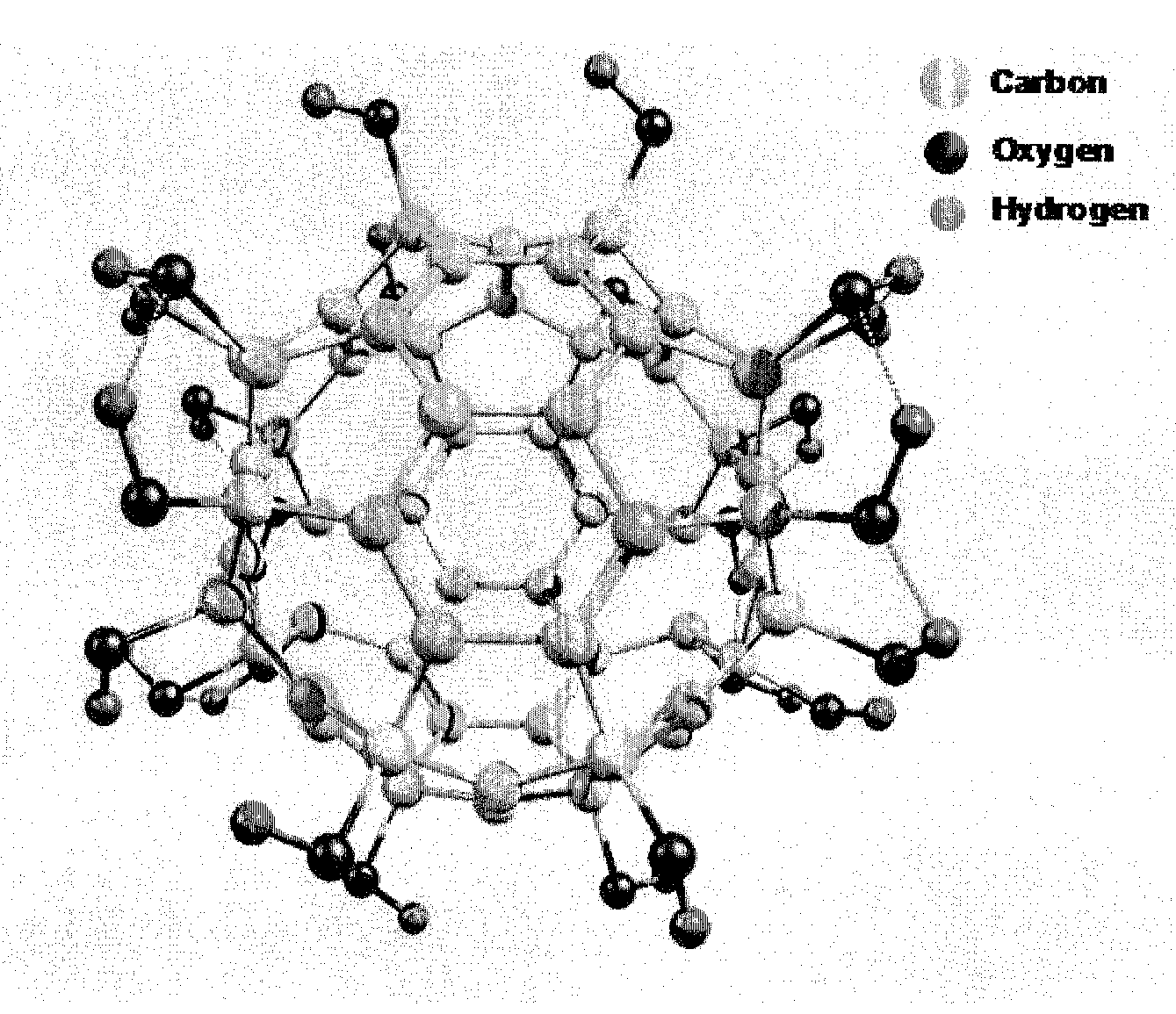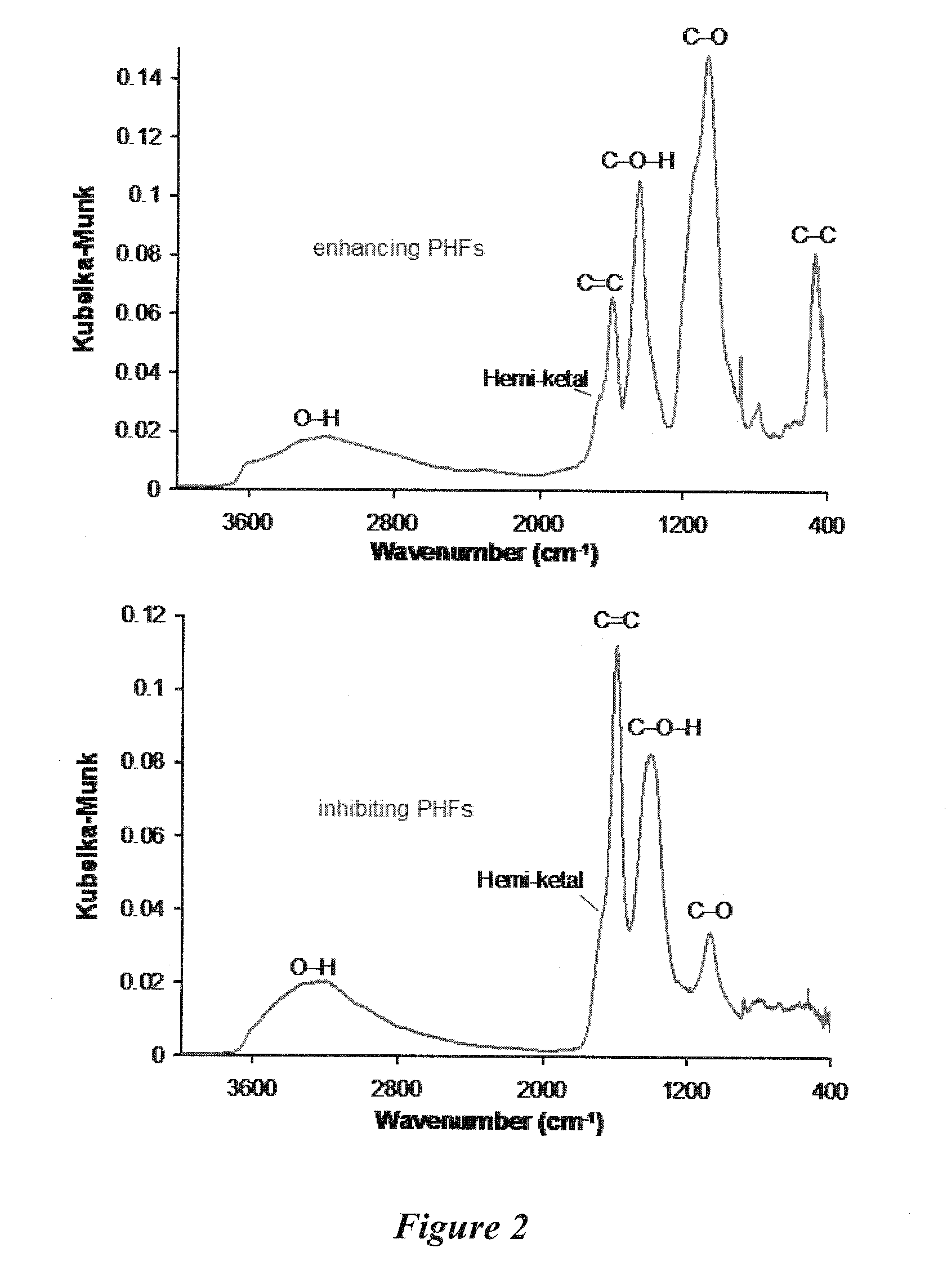Enhancement of electron scavenging by water-soluble fullerenes
a technology of water-soluble fullerene and electron scavenging, which is applied in the direction of organic compound/hydride/coordination complex catalyst, physical/chemical process catalyst, metal/metal-oxide/metal-hydroxide catalyst, etc., and can solve the problems of affecting the performance of materials that require electron scavenging and providing significantly less efficiency
- Summary
- Abstract
- Description
- Claims
- Application Information
AI Technical Summary
Benefits of technology
Problems solved by technology
Method used
Image
Examples
Embodiment Construction
[0022]The present invention is directed to PHF compositions that result in an enhanced electron scavenging ability. In embodiments of the invention the enhanced electron scavenging PHFs are combined with other materials or employed in devices that exploit the enhanced electron scavenging PHFs. The functionality of PHF influences its electron scavenging ability. PHFs commonly contain functional groups such as hydroxyl, hemiketal, epoxide and carbonyl groups that modify the electronic properties of the PHFs. It was discovered that PHFs which have a low ratio (<or =0.3) of non-hydroxyl functional groups to hydroxyl functional groups have enhanced electron scavenging ability, whereas PHFs that display a ratio higher than 0.3 have little or no electron scavenging ability. It was also discovered that PHFs where the weight loss to temperatures of about 1,000° C. is less than about 55% exhibit enhanced electron scavenging ability, whereas PHFs which display weight loss of more than 80% have...
PUM
| Property | Measurement | Unit |
|---|---|---|
| temperature | aaaaa | aaaaa |
| diameter | aaaaa | aaaaa |
| weight ratio | aaaaa | aaaaa |
Abstract
Description
Claims
Application Information
 Login to View More
Login to View More - R&D
- Intellectual Property
- Life Sciences
- Materials
- Tech Scout
- Unparalleled Data Quality
- Higher Quality Content
- 60% Fewer Hallucinations
Browse by: Latest US Patents, China's latest patents, Technical Efficacy Thesaurus, Application Domain, Technology Topic, Popular Technical Reports.
© 2025 PatSnap. All rights reserved.Legal|Privacy policy|Modern Slavery Act Transparency Statement|Sitemap|About US| Contact US: help@patsnap.com



